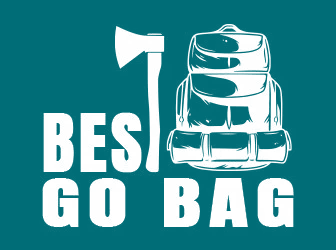Here in Nashville, Tennessee, we hear a lot of country music. Including songs by singer and songwriter Alan Jackson, one of the best-selling music artists of all time.
One of his big hits, from his 2004 What I Do album, is titled Too Much of a Good Thing. Reaching No. 5 on the Billboard Hot Country Singles and Tracks chart, the song expresses the sentiment that in a good relationship, too much of a good thing is still a good thing.
Can’t argue with that opinion. But I’m reminded that too much of some good things can be a bad thing. Such as water. Storms that produce massive amounts of rain, like Hurricane Ian did recently in Florida and South Carolina, are usually both deadly and destructive.
In today’s News4Patriots, I want to talk about the major issues that occur for the water supply in towns when flooding happens.
Water Service Connections Struggle
Back in July, floodwaters during and following a storm resulted in the deaths of at least 37 people in Eastern Kentucky.
As nearly always happens, water contamination was next. Floodwaters carry sewage and other pollutants. And then contaminated water invariably finds its way into drinking water supplies.
Approximately 13,500 water service connections were still without water days after the flooding. Another 41,000 service connections had boil advisories.
Even after being reconnected to the local water system, some residents said they were hesitant to use the water for anything other than washing, due to its murky appearance.
Hurricane Ian Causes Extensive Flooding
Still fresh in our minds is the incredible damage done by Hurricane Ian, which made landfall in southwest Florida as a powerful Category 4 storm with sustained winds of 150 miles per hour.
It then moved northeast across the state as a tropical storm, regained strength as a Category 1 hurricane and ravaged South Carolina.
The storm ended up killing at least 137 people, including 126 in Florida, and causing at least $28 billion in damages to homes, businesses and property. Water contaminations were reported in many areas.
During a press conference the day after Ian made landfall, President Joe Biden said Ian might end up being the deadliest hurricane in Florida’s history. It ended up being the deadliest in Florida since 1935.
Public & Private Systems Are Vulnerable
Even heavy rainfall alone can contaminate a city’s water supply. When it’s accompanied by a tidal surge or flooding, contamination is even more likely.
Water treatment plants are often negatively affected by extreme storms such as hurricanes. And even when they continue to operate properly, storm damage or flooding can contaminate water lines.
Public water systems are not the only ones affected by extreme flooding. Private wells and springs also fall victim. After rainfall hits the ground, it comes into contact with animal waste and bacteria.
And when rains become too heavy and long lasting, bacteria, sewage and other industrial waste and chemicals also seep into water sources or leaky pipes. The large amounts of water also make it more difficult for water treatment devices to treat water efficiently and effectively.
Boiling or Bleach First Line of Defense
Regardless of where they get their water, residents should not use water suspected of being contaminated for anything. Including brushing teeth, washing dishes or clothes, or preparing food. And certainly not for drinking.
Boiling your water is a good way to get rid of harmful bacteria and parasites. But it won’t eliminate heavy metals that may have seeped into your water.
When boiling water is not possible, use household bleach. Add eight drops of plain, unscented bleach per gallon of water. Mix the solution and let it stand for 30 minutes. If the water is still cloudy, repeat the procedure.
If the chlorine taste is too strong, pour the water from one clean container into another and let it stand for a few hours before using.
Residents Asked to Limit Water Use
The day before Ian’s onslaught against Florida, the St. Petersburg public works administrator asked residents to limit the nonessential use of water.
He said the request was made to avoid the worst-case scenario of the city shutting off its water supply and sewer system.
He clarified that residents should take care of their essential water needs, but should hold off on clothes washing and dishwashing. So that the system could handle whatever stress it was put under by the heavy rain.
The city proactively tested all its pumps to ensure that water tanks were at their correct levels. Sometimes pumps lose electric power during violent storms, disrupting water service.
Be Ready for Flooding – Anytime and Anywhere
Nearly all of us could experience flooding resulting in water contamination at any time.
The keys for preparation are to have plenty of clean drinking water stored up for an emergency, and have a way to filter and purify water we may have to drink that comes from potentially contaminated sources.
Those who have to evacuate their homes in anticipation of a big storm should turn off the emergency water shut-off valve. This will minimize damage to the home’s interior should a pipe burst.
Water is wonderful. It sustains our lives on a daily basis. But too much of a good thing can cause major problems. Make sure you’re prepared for the next time you’re faced with flooding.


